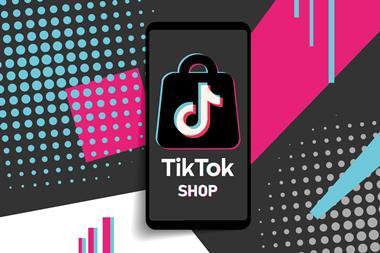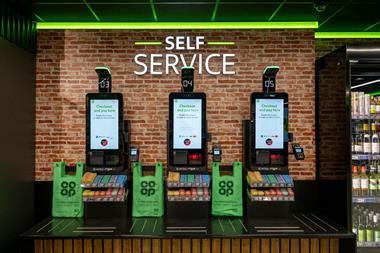Early digital store signage is being overtaken by more sophisticated media. Joanna Perry finds out how video is stealing the show.
Product videos are becoming commonplace on retailers’ web sites – but how about in their stores? Sure, a few have had digital signage networks in place for a number of years with mixed success, but the latest trend is to use video to inform and entertain customers, rather than merely highlight manufacturers’ latest offers.
Disney Store has video screens in all its stores and is upgrading the system it uses as part of its store refurbishment programme, as well as introducing the new technology in new stores.
Disney Store senior European marketing manager Amy Bennett says: “We have a lot of amazing content at our fingertips.” This includes film trailers, clips and songs from Disney’s movies and content is refreshed monthly or more often.
She adds that there has been a particular focus on introducing technology into new stores. Features include a “heart of Disney” column in the centre of stores with a 360-degree wrap-around screen, which Bennett claims was a first in retail.
In each store where the technology has been implemented, a digital ticker tape display sits underneath the screen, showing relevant information – for instance, Disney used these devices to let customers know when the Disney movie Ratatouille won an Oscar for best animated feature film.
Bennett says that there are also four flatscreen displays showing content above the cash and wrap desks in each store. So that younger customers are also able to view the content streams, mini versions of these screens have been set into the front of the cash-and-wrap counters.
All the screens in new and upgraded stores are linked to a system that manages the content. Bennett says that this allows Disney to use features such as split screens, so that the displays can make characters appear to bounce from screen to screen.
Although content tends to be changed on a monthly basis in line with new products, Disney is able to change it from one day to the next, if for instance a promotion ends or a product sells out.
The technology has been introduced at three of Disney’s UK stores so far – at Lakeside, Liverpool and Manchester Arndale – and this should have increased to nine or 10 by the end of the year.
Bennett says that running video in its stores is part of the in-store experience. “Coming to a Disney Store is like a mini version of going to one of the Disney parks. We keep the content as upbeat and entertaining as possible. We will show classic content as well, but do lots around new releases,” she explains.
Cable & Wireless director of product management Philip Grannum supports the idea of centralised content management, which allows screens in different stores to show different content based on factors such as demographics and time of day. Running a centralised system also makes reporting on what has been shown when and where easier, which is important when you need to prove compliance to a manufacturer that has paid for their promotion to be displayed.
The telecoms firm has its own digital signage system, which combines screens with IP cameras and an analytics tool, so that a retailer can work out how many customers are looking at each screen.
From here he says that a next step would be to also link the system with customers’ mobile phones. This would allow a retailer to have some idea of who is viewing the screens and potentially allow video content to be sent straight to customers’ mobile phones.
One reason that retailers have been reticent to introduce rich media into their stores is the wide area network bandwidth required to deliver the content.
Grannum says that technology can solve this challenge without the need for a network upgrade. “Our system works in two ways: you can stream it or download it to a small box behind the screen, so you don’t really need much bandwidth at all,” he explains.
However, the latest development in this area of in-store technology is interactive video. Tesco already has a 5,000-strong digital screen signage network, Tesco Screens, that was relaunched by Clubcard operator Dunnhumby a year ago. However, in June it announced it will test videoconferencing in stores to allow customers access to centralised product experts (Retail Week, June 6).
This might sound far-fetched, but in North America similar initiatives have been a little quicker to catch on. For example, at the National Retail Federation show last year, electricals retailer Circuit City was mooting the idea of making its Firedog technical service staff available to customers via a video link in stores.
In Canada, Staples has rolled out Video Agent customer service kiosks to 34 stores to let customers talk to its sale agents via a video connection. The Video Agent features a web camera, microphone, scanner and customised user interface.
Staples Business Depot began piloting the system from Experticity in 2006, when it installed the system in five stores. It was tested as a tool to help shoppers get answers to their questions about products, as well as a resource for small business customers to create business materials. Because the kiosks are fully portable, Staples has been able to test their effectiveness in different areas of the stores.
Staples Business Depot manager of process improvement James Pelrine explains: “The response to Video Agent over the past two years has been overwhelmingly positive. People love the convenience of a standalone station where they can talk to real people and get great customer service. In addition, we have determined that Video Agent not only improves our customer service levels, but also contributes to our bottom line.”
The retailer has set up a contact centre in Toronto, which can be called on by customers in any of the 34 stores where the kiosk is installed. Contact centre staff sit in front of two screens so that they can access information to help the customer and then decide which information they should push down to the customer’s screen for them to see.
The idea is to pool the knowledge of the most experienced staff across multiple stores, rather than make customers wait around in-store to speak to someone who may or may not be able to help with their enquiry.
As well as dealing with customer enquiries, the staff in the contact centre are able to take orders for customised business supplies. Before the system was introduced, it took about a week for customers to receive customised supplies; order details had to be faxed to third parties and customers had to then come back to the store to check proofs. Now, the sales staff can complete the entire process via the Video Agent – which includes a digital proofing process – while the customer is in a store.
This means that store staff have more time to deal with other customer queries. Staples has also found that staff use the kiosks themselves as an easy way to get their own questions answered.
Pelrine adds that the kiosks could be used to sell entirely new product lines, where in-depth knowledge is needed to advise customers. While it may not be cost-effective to hire and train product specialists for new lines in each store, the kiosk system would allow the company to branch out into more specialist products and services.
In the UK, Grannum thinks that the retail banking sector will be quicker to catch on with interactive video, to help customers receive expert, on-the-spot advice via a video link.
Tesco itself has announced plans for a full-service retail bank following its buy-out of Tesco Personal Finance from Royal Bank of Scotland. When it told Retail Week about its plans to test video-based customer service it suggested that this would be suitable for providing advice on products such as consumer electronics. It will be interesting to see if it desires or is able to extend this platform to financial services.
Tesco is investing a substantial figure with Cable & Wireless to upgrade its wide area network so that video applications will run smoothly. Grannum warns that other retailers interested in using video in this way will have to examine their network infrastructure.
Once a retailer begins to think about interactive video, bandwidth becomes a critical issue. Grannum explains: “If you are moving to interactive, you have to think about bandwidth, the contention ratio on the network and the relative upstream and downstream speeds.”
He says that a 10mb per second symmetrical broadband link may be necessary, which is far more than many retailers have – many retailers use simple ADSL, where the upload speed and download speeds are different.
These latest investments in store-based video may not have produced hard results in terms of sales uplifts yet but, at a time when retailers are being encouraged to improve the in-store experience to maintain footfall, it’s certainly one to watch.
Disney Store has video screens in all its stores and is upgrading the system it uses as part of its store refurbishment programme, as well as introducing the new technology in new stores.
Disney Store senior European marketing manager Amy Bennett says: “We have a lot of amazing content at our fingertips.” This includes film trailers, clips and songs from Disney’s movies and content is refreshed monthly or more often.
She adds that there has been a particular focus on introducing technology into new stores. Features include a “heart of Disney” column in the centre of stores with a 360-degree wrap-around screen, which Bennett claims was a first in retail.
In each store where the technology has been implemented, a digital ticker tape display sits underneath the screen, showing relevant information – for instance, Disney used these devices to let customers know when the Disney movie Ratatouille won an Oscar for best animated feature film.
Bennett says that there are also four flatscreen displays showing content above the cash and wrap desks in each store. So that younger customers are also able to view the content streams, mini versions of these screens have been set into the front of the cash-and-wrap counters.
All the screens in new and upgraded stores are linked to a system that manages the content. Bennett says that this allows Disney to use features such as split screens, so that the displays can make characters appear to bounce from screen to screen.
Although content tends to be changed on a monthly basis in line with new products, Disney is able to change it from one day to the next, if for instance a promotion ends or a product sells out.
The technology has been introduced at three of Disney’s UK stores so far – at Lakeside, Liverpool and Manchester Arndale – and this should have increased to nine or 10 by the end of the year.
Bennett says that running video in its stores is part of the in-store experience. “Coming to a Disney Store is like a mini version of going to one of the Disney parks. We keep the content as upbeat and entertaining as possible. We will show classic content as well, but do lots around new releases,” she explains.
Cable & Wireless director of product management Philip Grannum supports the idea of centralised content management, which allows screens in different stores to show different content based on factors such as demographics and time of day. Running a centralised system also makes reporting on what has been shown when and where easier, which is important when you need to prove compliance to a manufacturer that has paid for their promotion to be displayed.
The telecoms firm has its own digital signage system, which combines screens with IP cameras and an analytics tool, so that a retailer can work out how many customers are looking at each screen.
From here he says that a next step would be to also link the system with customers’ mobile phones. This would allow a retailer to have some idea of who is viewing the screens and potentially allow video content to be sent straight to customers’ mobile phones.
One reason that retailers have been reticent to introduce rich media into their stores is the wide area network bandwidth required to deliver the content.
Grannum says that technology can solve this challenge without the need for a network upgrade. “Our system works in two ways: you can stream it or download it to a small box behind the screen, so you don’t really need much bandwidth at all,” he explains.
However, the latest development in this area of in-store technology is interactive video. Tesco already has a 5,000-strong digital screen signage network, Tesco Screens, that was relaunched by Clubcard operator Dunnhumby a year ago. However, in June it announced it will test videoconferencing in stores to allow customers access to centralised product experts (Retail Week, June 6).
This might sound far-fetched, but in North America similar initiatives have been a little quicker to catch on. For example, at the National Retail Federation show last year, electricals retailer Circuit City was mooting the idea of making its Firedog technical service staff available to customers via a video link in stores.
In Canada, Staples has rolled out Video Agent customer service kiosks to 34 stores to let customers talk to its sale agents via a video connection. The Video Agent features a web camera, microphone, scanner and customised user interface.
Staples Business Depot began piloting the system from Experticity in 2006, when it installed the system in five stores. It was tested as a tool to help shoppers get answers to their questions about products, as well as a resource for small business customers to create business materials. Because the kiosks are fully portable, Staples has been able to test their effectiveness in different areas of the stores.
Staples Business Depot manager of process improvement James Pelrine explains: “The response to Video Agent over the past two years has been overwhelmingly positive. People love the convenience of a standalone station where they can talk to real people and get great customer service. In addition, we have determined that Video Agent not only improves our customer service levels, but also contributes to our bottom line.”
The retailer has set up a contact centre in Toronto, which can be called on by customers in any of the 34 stores where the kiosk is installed. Contact centre staff sit in front of two screens so that they can access information to help the customer and then decide which information they should push down to the customer’s screen for them to see.
The idea is to pool the knowledge of the most experienced staff across multiple stores, rather than make customers wait around in-store to speak to someone who may or may not be able to help with their enquiry.
As well as dealing with customer enquiries, the staff in the contact centre are able to take orders for customised business supplies. Before the system was introduced, it took about a week for customers to receive customised supplies; order details had to be faxed to third parties and customers had to then come back to the store to check proofs. Now, the sales staff can complete the entire process via the Video Agent – which includes a digital proofing process – while the customer is in a store.
This means that store staff have more time to deal with other customer queries. Staples has also found that staff use the kiosks themselves as an easy way to get their own questions answered.
Pelrine adds that the kiosks could be used to sell entirely new product lines, where in-depth knowledge is needed to advise customers. While it may not be cost-effective to hire and train product specialists for new lines in each store, the kiosk system would allow the company to branch out into more specialist products and services.
In the UK, Grannum thinks that the retail banking sector will be quicker to catch on with interactive video, to help customers receive expert, on-the-spot advice via a video link.
Tesco itself has announced plans for a full-service retail bank following its buy-out of Tesco Personal Finance from Royal Bank of Scotland. When it told Retail Week about its plans to test video-based customer service it suggested that this would be suitable for providing advice on products such as consumer electronics. It will be interesting to see if it desires or is able to extend this platform to financial services.
Tesco is investing a substantial figure with Cable & Wireless to upgrade its wide area network so that video applications will run smoothly. Grannum warns that other retailers interested in using video in this way will have to examine their network infrastructure.
Once a retailer begins to think about interactive video, bandwidth becomes a critical issue. Grannum explains: “If you are moving to interactive, you have to think about bandwidth, the contention ratio on the network and the relative upstream and downstream speeds.”
He says that a 10mb per second symmetrical broadband link may be necessary, which is far more than many retailers have – many retailers use simple ADSL, where the upload speed and download speeds are different.
These latest investments in store-based video may not have produced hard results in terms of sales uplifts yet but, at a time when retailers are being encouraged to improve the in-store experience to maintain footfall, it’s certainly one to watch.


























No comments yet